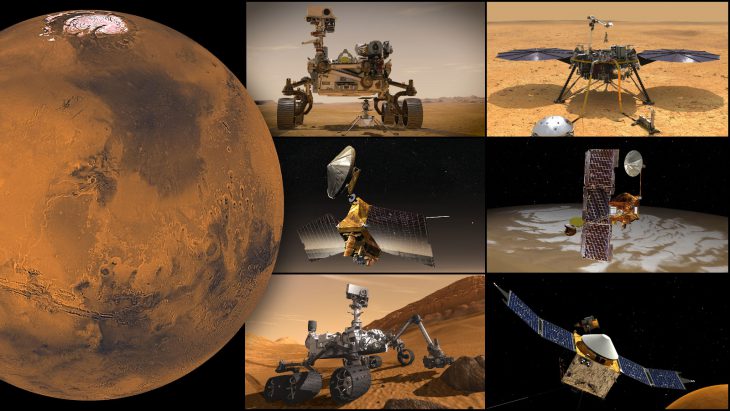We have never found conclusive evidence of extraterrestrial life, but that is not for lack of looking. There are several current and upcoming scientific missions seeking evidence of life elsewhere in the universe. As scientists look for evidence of extraterrestrial life, they also research how life emerged and evolved on Earth. Knowledge of life on Earth helps scientists know where and how to look for evidence of life on other planets and moons.
Within the last few decades, scientists have discovered microorganisms living in the deep underground waters of the Earth, cut off from the surface for between one million and one billion years. Being cut off from Earth’s surface means that these microorganisms can’t rely on sunlight for energy like cyanobacteria and plants do. Nor can these underground microorganisms consume surface microorganisms, plants, or animals because they are too deep within the Earth for any living or dead surface organisms to reach them. Instead, these underground, or subsurface, microorganisms live off of the energy from interactions between the water and rocks where they live.
One of the water-rock reactions that subsurface microorganisms rely on is called radiolysis. Radiolysis occurs when naturally found radioactive minerals within rocks break down and release small amounts of radiation. This radiation breaks apart nearby water molecules. When radiation breaks apart water molecules, new molecules, including hydrogen gas and hydrogen peroxide, can form.
Some rocks contain a large amount of minerals called sulfides. Pyrite, also known as “Fool’s Gold,” is one example. When radiolysis takes place in pyrite, the hydrogen peroxide interacts with the sulfides to form sulfates. Sulfates and hydrogen can fuel the metabolism of subsurface microorganisms the same way oxygen and your favorite sandwich fuels your metabolism.
The discovery of a deep underground biosphere on Earth changed the way scientists understand life on Earth. More recently, scientists considered that the same processes that produce sulfate and hydrogen in Earth’s subsurface could happen in Mars’ subsurface. That may change the way scientists look for evidence of life on Mars.
To determine whether radiolysis and sulfate production on Mars could support underground life, scientists needed to know how much radioactive minerals, water, and sulfides might be present under the surface of Mars. They were able to estimate the amount of radioactive minerals and sulfides in different parts of Mars’s subsurface by studying the composition of different martian meteorites.
Scientists have known that Mars has some subsurface water for several decades, but they don’t know how much. Using rover and orbiter data showing the densities of different martian rocks, the team estimated the amount of water that might be there. Why would rock densities matter? Less dense rock has more space available for water to fill when water is present. More dense rock will allow less room for water
The scientists used their estimates of radioactive minerals, sulfides, and space for water in different types of martian rocks to calculate how much sulfate and hydrogen could be produced in the deep subsurface of Mars. Then, they used the metabolic rates of microorganisms on Earth to estimate how many microorganisms that amount of sulfate and hydrogen could support. In the end, they found that depending on the type of rock and the amount of pore space it has, the martian subsurface could support between 0.4 and 1,000,000 microbial cells per kilogram of rock wherever liquid water is present. This range is similar to the number of microorganisms found in Earth’s subsurface.
Scientists only discovered the microbial biosphere in Earth’s deep subsurface recently. Already, that discovery has revealed a new place to look for evidence of life on Mars. We may be one step closer to finding conclusive evidence of extraterrestrial life.


